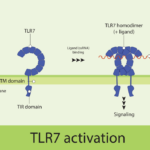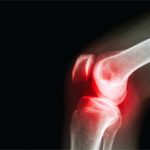WASHINGTON, D.C.—Although 365 days is a long time to account for when it comes to advances in a field such as rheumatology, the two speakers at the ACR Convergence 2024 Year in Review lecture did a wonderful job summarizing key highlights.
Can RA Be Prevented?
The first speaker was Michael Pillinger, MD, professor of medicine and of biochemistry and molecular pharmacology at New York University Grossman School of Medicine, who provided the clinical year in review talk. Dr. Pillinger began by asking the question: Can rheumatoid arthritis (RA) be prevented by preclinical intervention? Because abatacept blocks co-stimulation during antigen presentation and acts at an early stage in the immune process of RA, two studies this past year evaluated this medication’s ability to prevent RA.
In the APIPPRA study, 213 individuals with inflammatory joint pain and antibodies to citrullinated protein antigens (ACPAs) and rheumatoid factor were randomized to receive either abatacept or placebo for 12 months. Participants were followed for an additional 12 months. After 12 months, about 30% of participants in the placebo group had RA or inflammation in ≥3 joints vs. only 6% in the abatacept group. At 24 months of follow up, 37% of participants in the placebo group had developed RA vs. 25% in the abatacept group.1
In the ARIAA study, individuals with ACPA positivity who showed signs of inflammation on magnetic resonance imaging (MRI) were randomized to receive abatacept or placebo for six months and were, then, observed for 12 months without treatment. Improvement in inflammation on MRI was seen in 61% of patients in the abatacept group compared with 31% in the placebo group, and 34.7% of participants in the placebo group had progressed to RA by six months vs. 8.2% in the abatacept group.2
Based on these studies, Dr. Pillinger concluded that abatacept provides proof that treating pre-RA by blocking T cell co-stimulation can reduce progression to frank RA and that a minority of patients may be able to avoid long-term therapy. However, further studies are needed to explore this topic.
Cardiovascular Risk in Gout
Dr. Pillinger next discussed gout, a condition that clinicians have long recognized to be associated with an increased risk of cardiovascular disease. What is new, however, is an emerging understanding of how fast that risk can increase. In a study from Cipolletta et al., researchers looked at patients with newly diagnosed gout—which they considered to be a surrogate for the patient’s first flare—and created three time periods: pre-exposure baseline (i.e., before gout diagnosis), exposed period (i.e., 120 days after gout diagnosis) and post-exposure baseline (i.e., more than 120 days after gout diagnosis).


